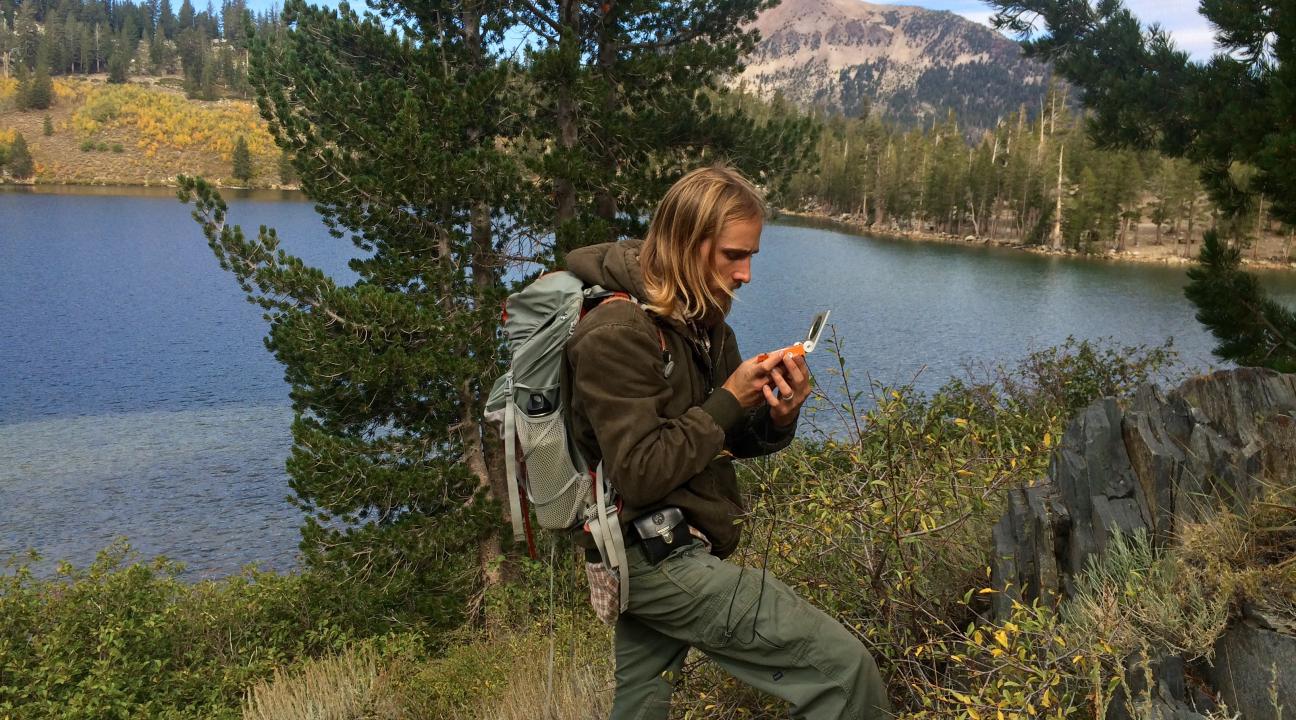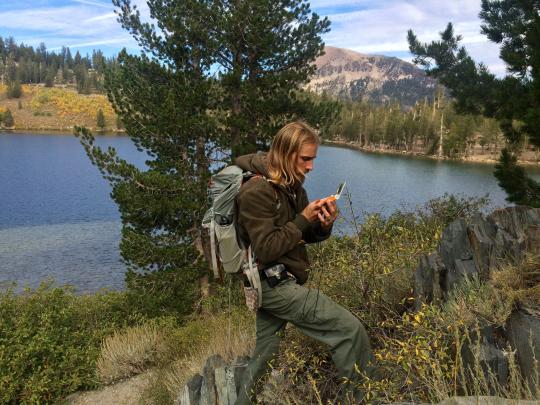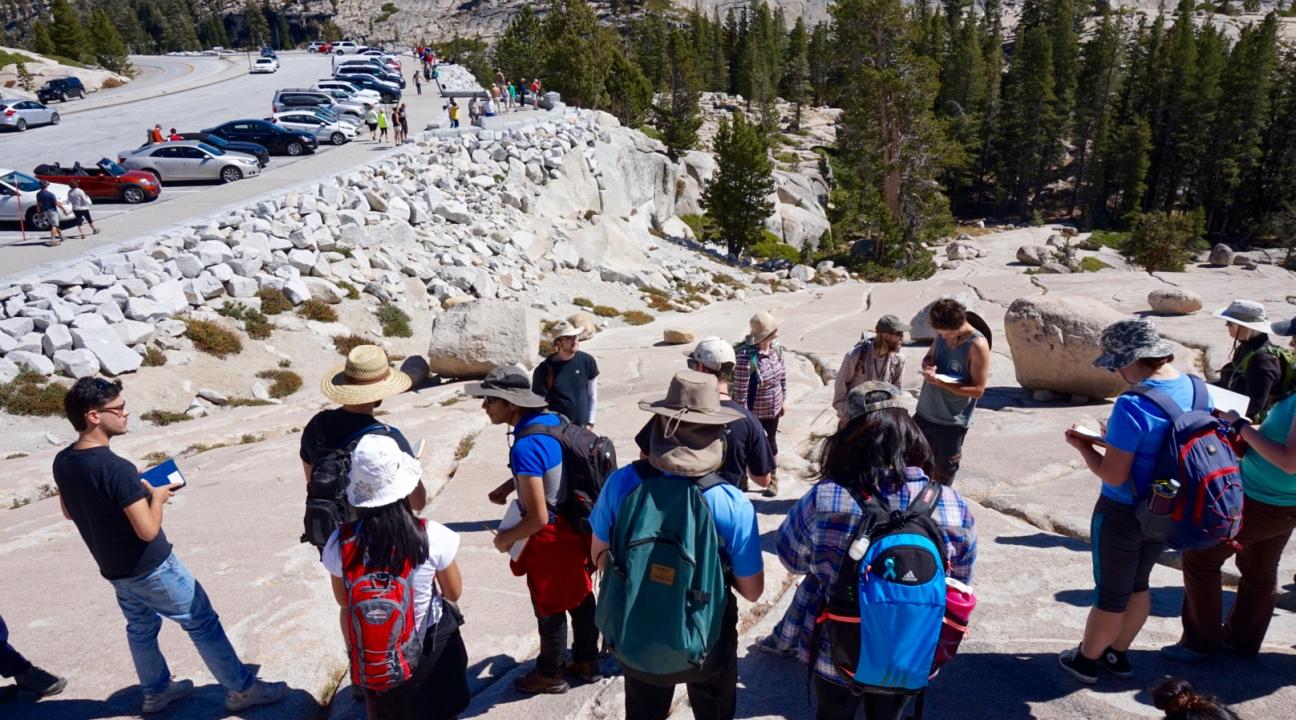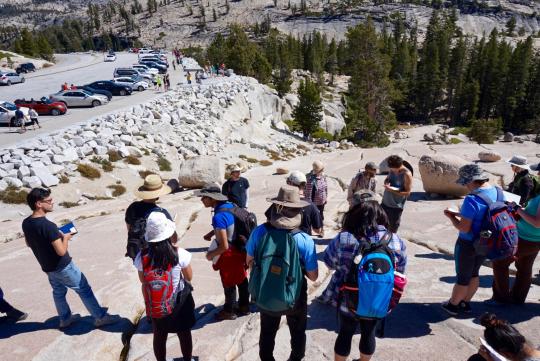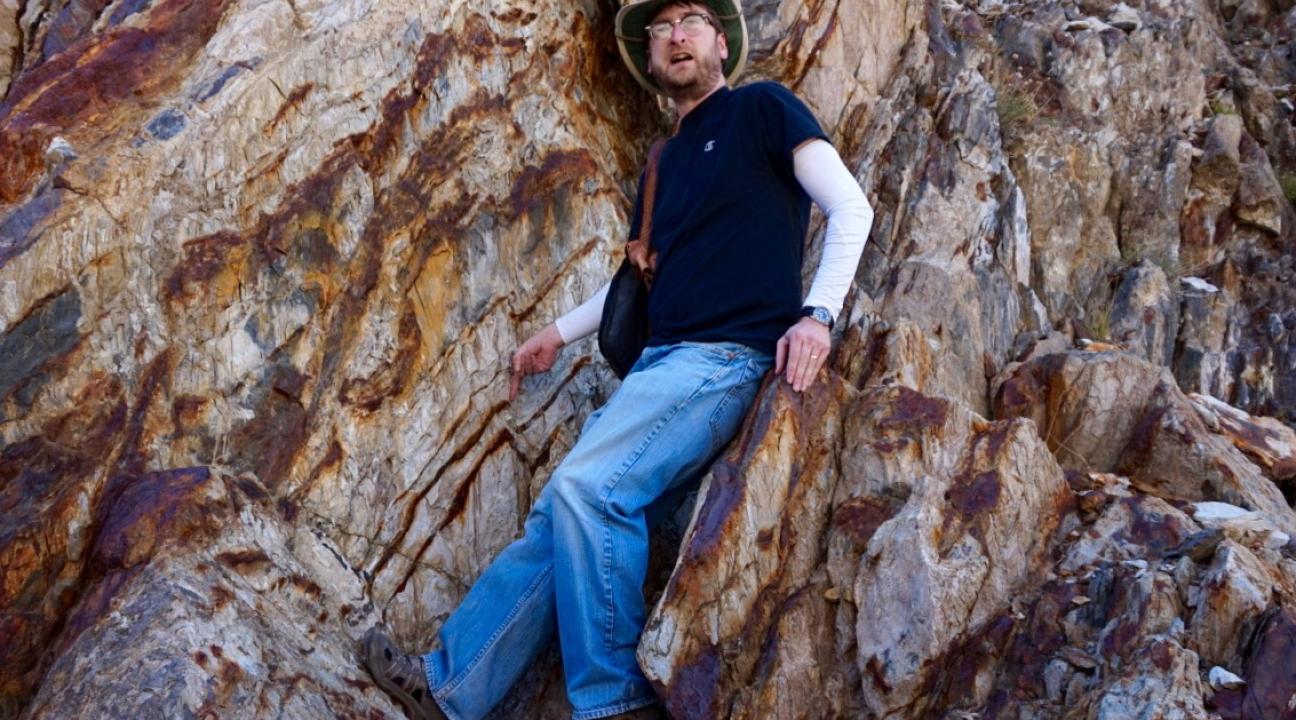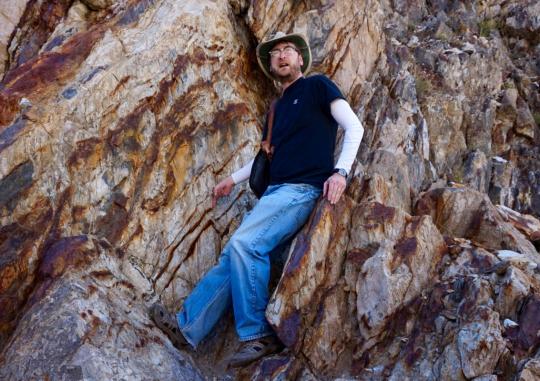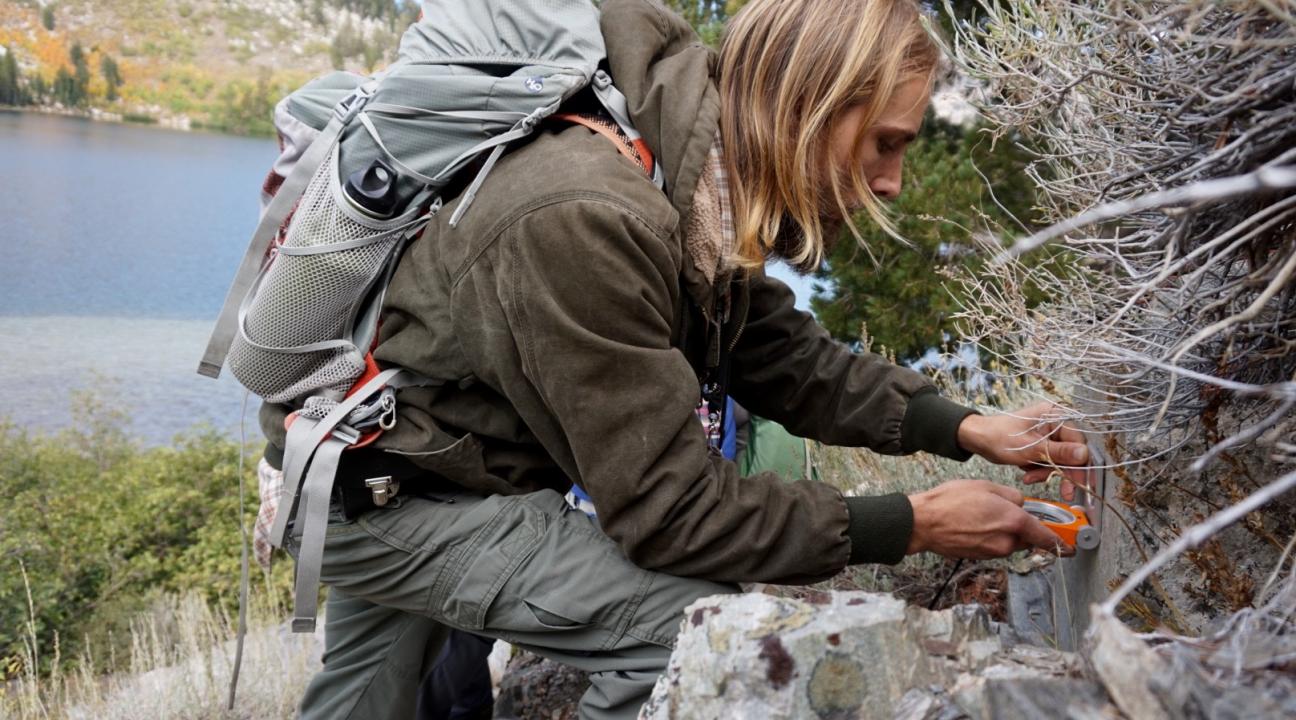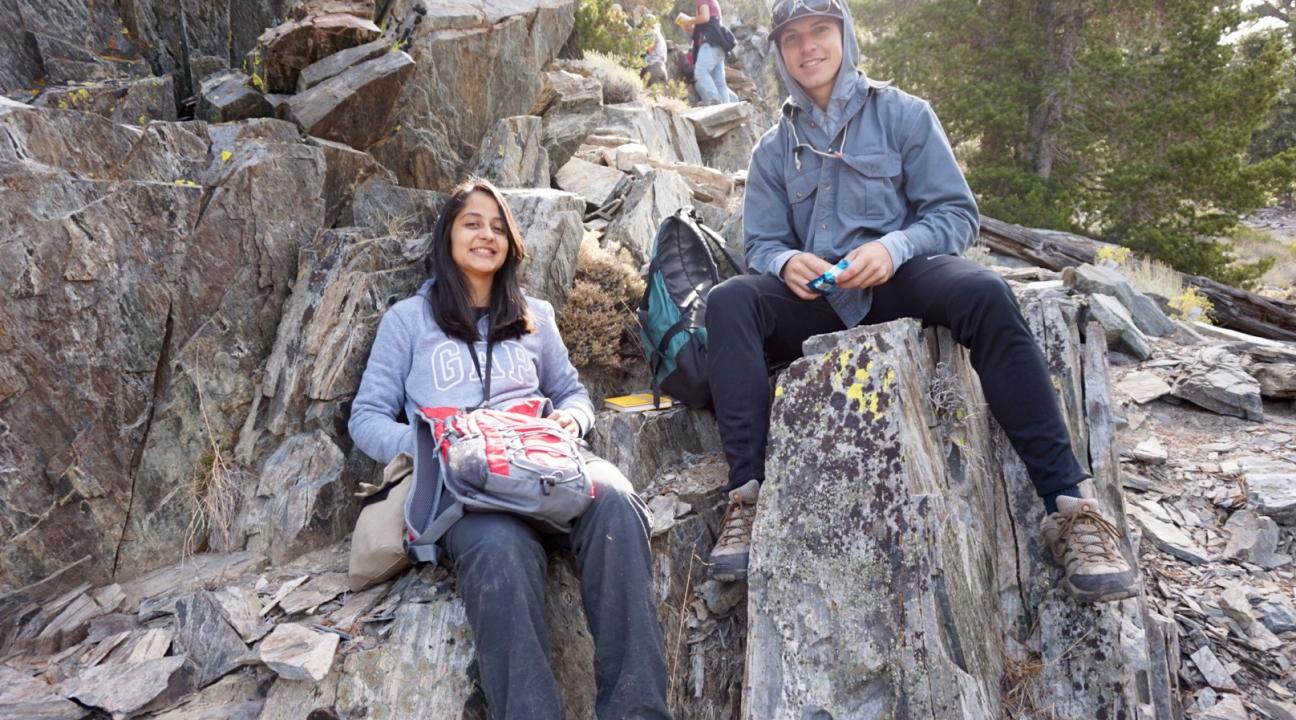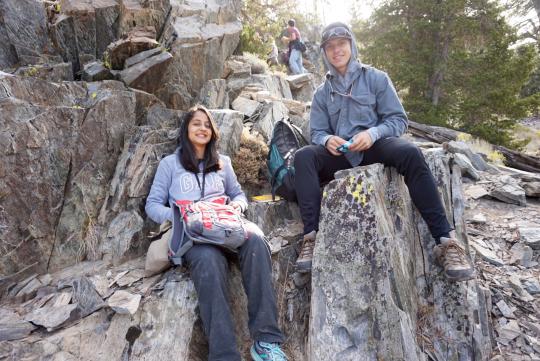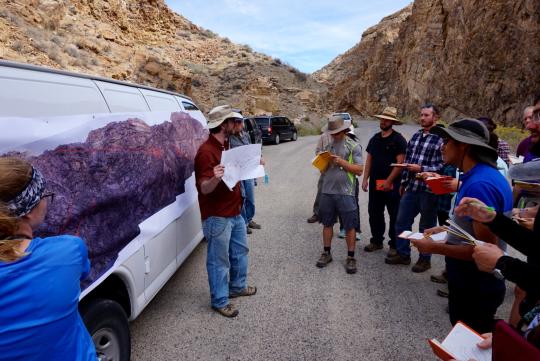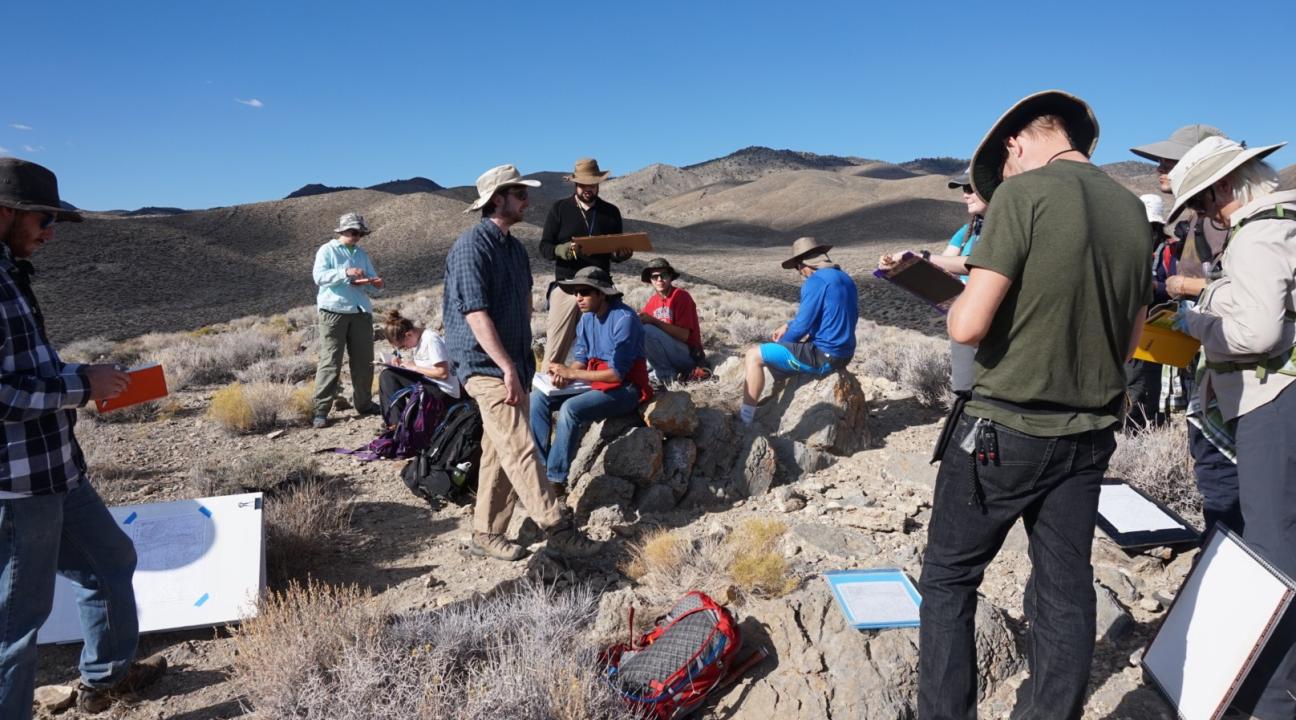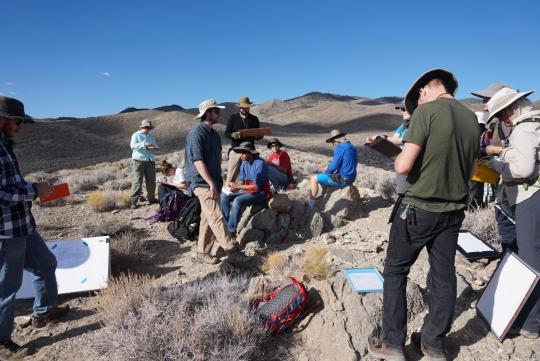GEOL 318: Structural Geology Field
Unfolding the Structural History of the Western Margin of North America at Poleta Folds.
By Philip Mooney
"Civilization exists by geological consent, subject to change without notice." - Will Durant
In the Department of Geology at SSU, students are taught hands-on scientific techniques to better understand the Earth throughout a series of camping-based field trips across western North America. These trips are the foundation of the department, and introduce students to the remarkable geology that surrounds us all. The Department of Geology's Matty Mookerjee and Phil Mooney recently led 17 students across California on a field trip for an upper-division course in Structural Geology.
Their mission: to unravel the 500 million year history of tectonic forces that have shaped our state. The trip started in the geology laboratory on the first floor of Darwin Hall, passed through Yosemite National Park, explored the Mammoth Lakes region, traveled through Long Valley Caldera, and ended with a detailed study of Poleta Folds in the natural laboratory of Deep Springs Valley. Throughout the trip, students were able to apply the lessons they learned in the classroom to rocks in a natural setting.
While working outside on a beautiful day in Yosemite, students identified rock types, learned to identify signs of deformation like fractures, folds, and faults, and practiced primary data collection using their Frieberger compasses and Trimble GPS units. Next stop was in Mammoth Lakes, where students measured the orientation of foliations and lineations along the shores of Lake George within the Rosy Finsh Shear Zone. Additional structural features were seen and described Earthquake Fault in the Inyo national Forest and the Owens River Gorge and Devil's Gate in Owens Valley.
The biggest project of the trip was a 2-day mapping exercise in the world-famous Poleta Folds field area of Deep Springs Valley. Working in Poleta Folds is a rite of passage in the field of geology, an experience shared by numerous students over the years. Students from universities across the nation descend upon this small pocket in the desert to study the 500 million year old sediments and "unfold" the history the rocks record. Graduates of SSU all share this common experience, and often tell stories of bonding with colleagues while reliving their days spent mapping under the hot desert sun.
In the evenings, weary students came back to the campground in Westgard Pass to eat and relax around a roaring fire. They exchanged stories about their days in the field and unwound by playing board games on the picnic tables before heading to their tents to sleep under a full moon. These shared experiences often help to form relationships with friends and colleagues that last for life.
Geologists study the Earth around us, and there is no better way to learn than by actually looking at rocks in the field. On every trip, we're reminded of this fact each time a student’s eyes light up with understanding. The Department of Geology is proud of its reputation for producing graduates that are capable and competent in the field. At the completion of this trip, 17 more SSU students have shown they have what it takes to represent the department and the university when they enter the workforce.



